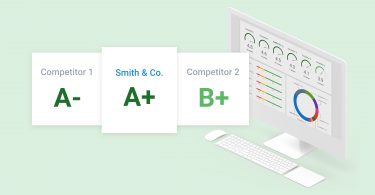If you’ve ever stared down an Excel sheet filled with thousands of rows of customer feedback and felt overwhelmed, you’re not alone. It’s a daunting task to identify sentiment themes and turn that data into actionable insights that your team can strategically leverage. Yet, as challenging as it is, there’s no avoiding the important role that customer feedback from reviews and survey responses plays in business growth.
Collecting and analyzing customer feedback is essential to ensure you’re delivering world-class customer experiences. However, feedback is received from multiple, scattered channels, and the larger your company, the more feedback you’re receiving.
Traditional methods of analyzing that amount of data require a great deal of time and resources, which isn’t sustainable. Close off that Excel sheet, and let customer sentiment analysis be your guide to gain a clear understanding of what your customers are saying on a granular level.
Table of contents
Centralize and optimize customer feedback to fuel growth
Agile customer experience programs are the key to success in 2022 and beyond. In fact, 67% of companies that have invested in such programs have experienced financial growth during the pandemic.
You might be getting high response rates for your surveys and a plethora of reviews across multiple sites. However, if you aren’t able to efficiently analyze that feedback to gain a unified view of customer sentiment, you’re missing out on opportunities for growth.
Given that 40% of marketers say that the insights delivered by their customer intelligence teams are not actionable, it’s safe to say that there’s a gap in data analysis. What’s the disconnect?
What is Customer Sentiment Analysis?
Many companies struggle with gaining a bird’s eye view (see what we did there?) of customer sentiment across all channels. This process gets even more complicated for multi-location businesses.
There are many tools that collect feedback. However, there are very few tools that measure all customer feedback across multiple channels as a collective whole. Customer sentiment analysis is the ideal solution to gain a holistic view of the customer experience. It will allow you to understand:
- Who is engaging with your brand
- What do they like and dislike
- Why do they feel the way they do about your company
It’s the automated process of identifying emotions in online, text-based communications to find out how customers feel about your product, brand, or service.
The key theme is that it’s an automated process, meaning it’s not confined to specific sites or platforms and that it optimizes the entire process of feedback collection and insight-gathering.

How sentiment analysis works
Sentiment analysis is powered by Natural Language Processing (NLP) and Machine Learning, which understand and interprets human language in text. Simply put, it quickly understands the context and tone of relevant keywords in customer feedback.
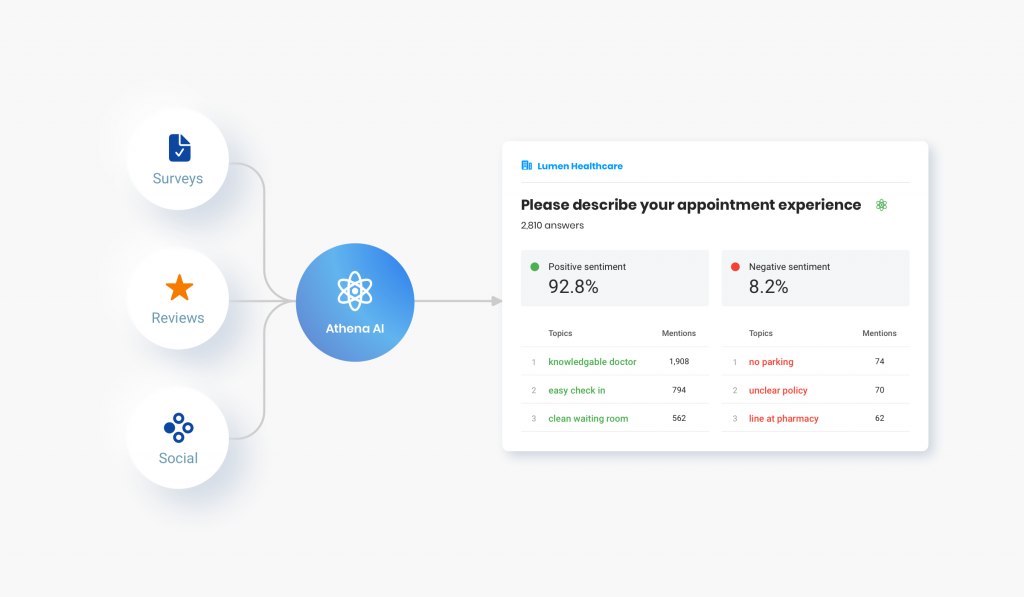
For you, that means you’ll spend more time focused on making strategic decisions and less time making sense of data.
- Turn large volumes of customer feedback from reviews and survey responses into actionable insights
- Understand customer sentiment to instantly know your business’s strengths and weaknesses
- Track customer feedback trends by location over time
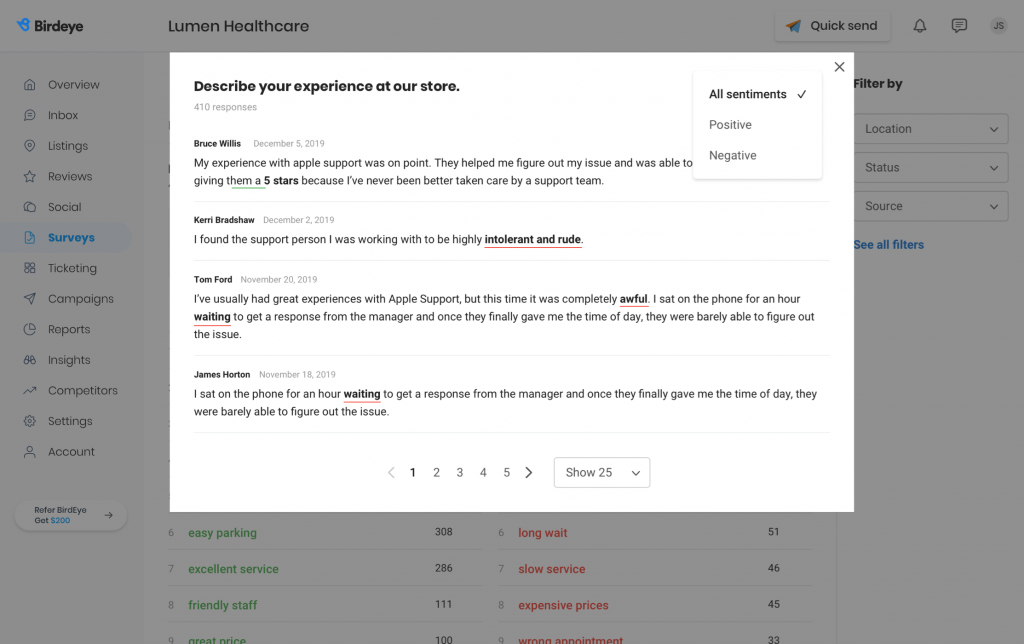
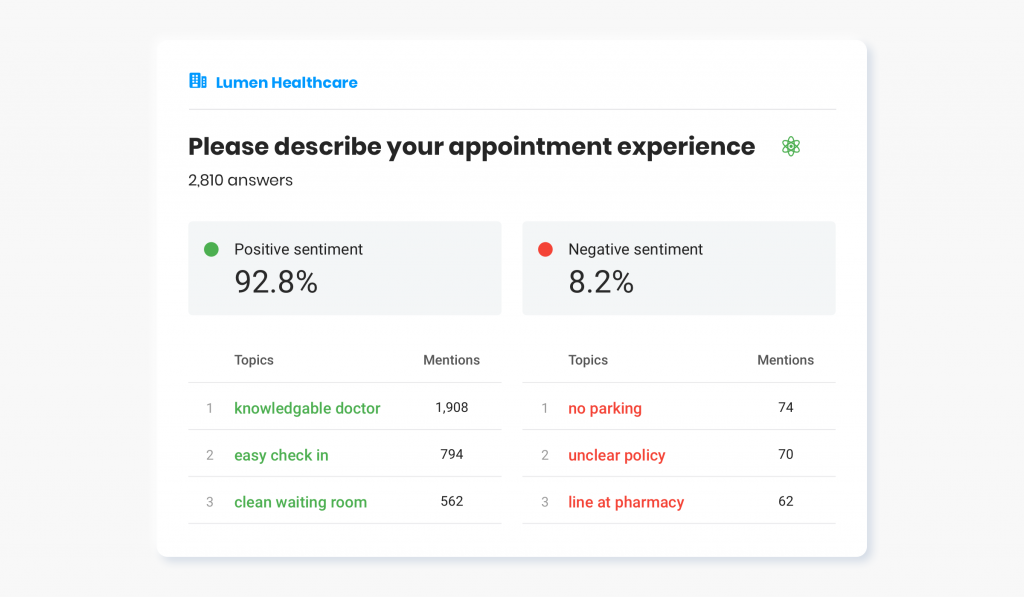
You can even easily see:
- The overall sentiment of your customers
- What percentage of customers have negative experiences vis-a-vis positive experiences
- What are the most common negative experiences – are they around service, long wait times, rude staff etc.
- Stack rank your locations in terms of customer service or wait times or any other criteria, enabling you to take action where needed.
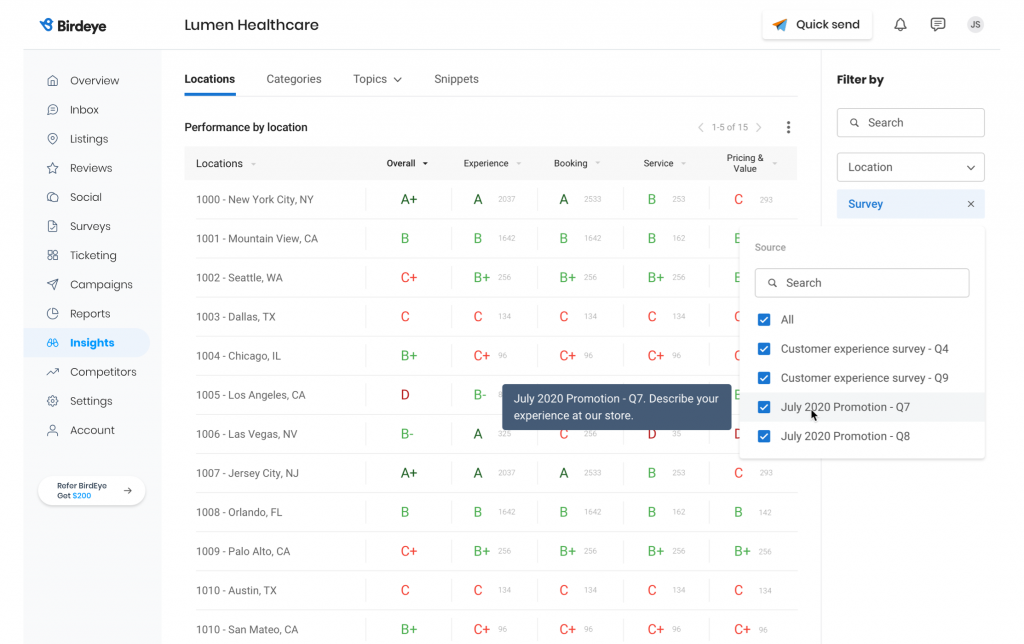
The benefits of customer sentiment analysis
Upselling and Referral opportunities
Happy customers are more likely to be receptive to buying additional products or services from you. They are also more likely to refer their friends and family to your business. With sentiment analysis, you can easily identify these happy customers.
This helps you recognize who might be receptive to spending more, as well as avoiding upsetting disgruntled customers with any unwelcome sales pitches. This is key to delivering personalized experiences that directly influences conversions. In fact, 86% of consumers say that personalization influences their purchasing decision.
Use data to drive your marketing strategy
Sentiment analysis done right will advance your marketing strategy, as it impacts many different aspects of your company’s online presence.
Analyzing the sentiment around your company’s brand will help you understand the motives behind your customers’ purchasing decisions and the intent behind their interactions.
Is your customer service a strong point? Do your ingredients make your product unique? Or maybe a feature you didn’t expect is gaining traction with customers.
Sentiment analysis provides strategic information on your strengths and weaknesses. There should be components of your marketing strategy that distinguish you from your competitors. That’s one of the benefits of sentiment analysis – it allows you to discover those unique parts of your offering, then leverages them to the fullest.
Tackle customer service disasters in the nick of time
If a customer issue occurs, you have to act fast before it escalates. In fact, 88% of customers expect a response from your business within 60 minutes.
Sentiment analysis also helps you quickly manage customer complaints at scale. Spotting negative comments early will help you nip critical situations in the bud. The faster you react, the better chance you have of resolving the problem and building customer loyalty. Customers who have issues resolved quickly are far more likely to share their good experiences with others.
Simplify customer feedback analysis
If customer experience is the new battleground for growth, then having the right technology by your side is your secret weapon. Leveraging software powered by NLP and Machine Learning will help your company deliver high-quality experiences and grow market share.
Sentiment analysis isn’t simply just another buzzword in customer experience. It’s a legitimate component of your marketing strategy. The benefits of sentiment analysis are undeniable and will boost your KPIs in the long run.
Want to learn how Birdeye can help you understand customer sentiment at scale and get actionable insights in seconds? Just click on the banner below.

Originally published




